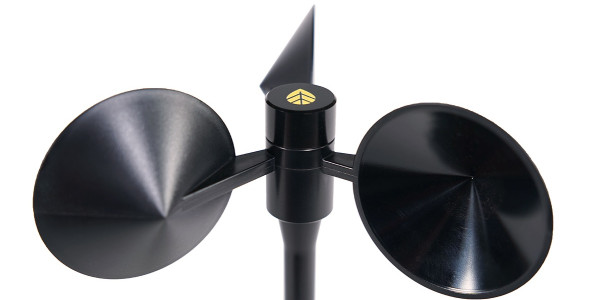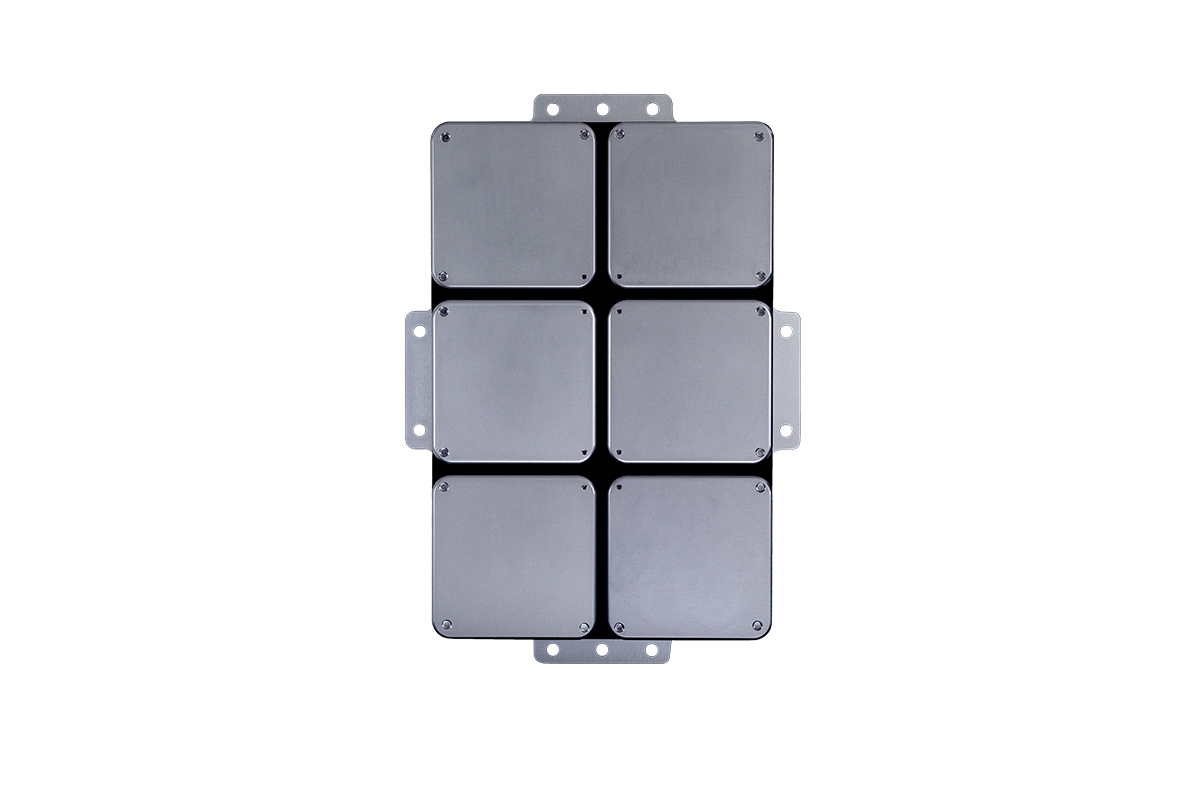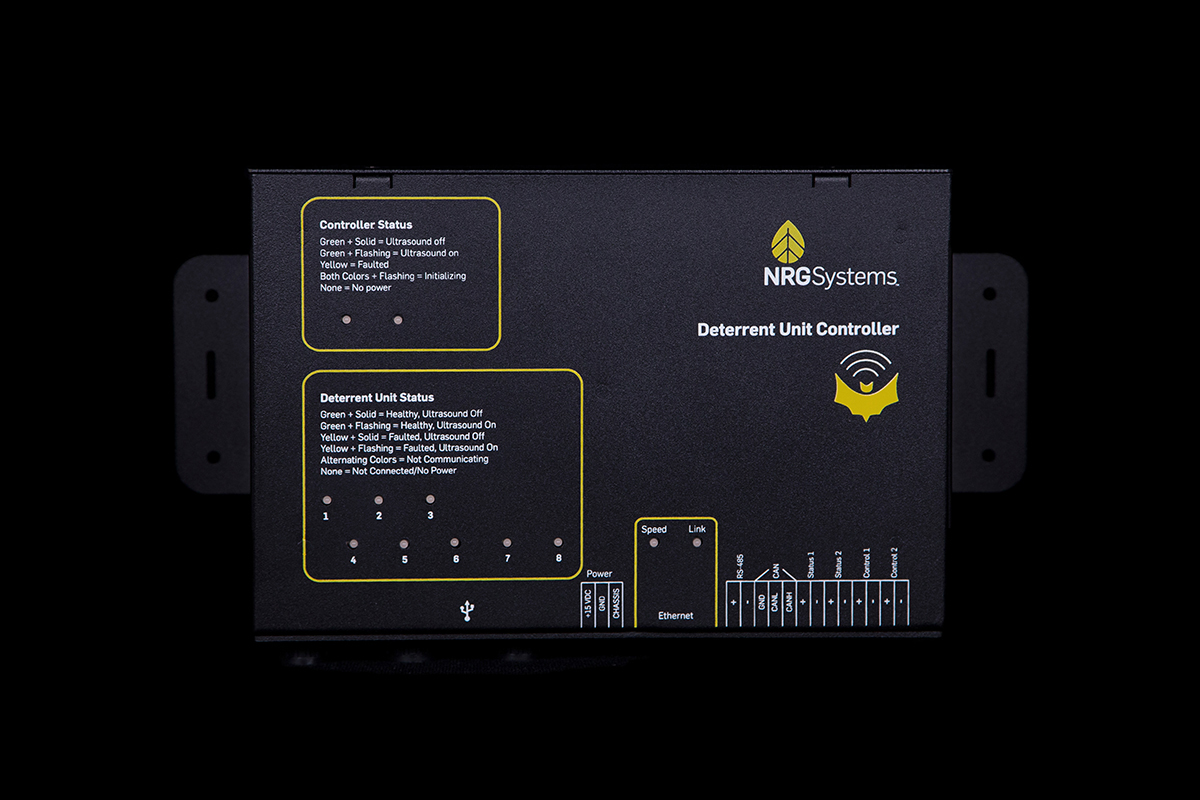Bat Deterrent Systems
Our Bat Deterrent System uses ultrasound to discourage bats from entering a turbine’s rotor swept area.
Details
HOW IT WORKS
The deterrent system emits an ultrasonic acoustic field in the same range as bats’ natural calling frequencies. This interferes with their ability to receive and interpret their own echolocation calls and creates a disorienting airspace that is difficult to navigate. By jamming their echolocation systems in such a way, bats are discouraged from entering the treated airspaces and roosting locations.

NO DETERRENT
Bats emit a high frequency call that is dispersed throughout the atmosphere, then reflect off of objects, including their prey. As the call travels away from the bat it spreads, causing the initial energy emitted to cover a larger and larger area. In this example we see that the call reflects off a moth, and travels back to the bat. The echo return suffers the same spreading losses as the outgoing signal, so the returning echo is very faint compared to the initial call. Bats rely on hearing this echo to determine how long it took the call to reach the object and bounce back, which provides information about how far away the object is.

WITH DETERRENT
The NRG Bat Deterrent Systems create constant ultrasonic noise at the same frequency as the bat call. When a bat enters the airspace where the deterrent units are operating, the ultrasound from the deterrent units will be louder than the echo return the bat is listening for. This effectively “jams” the bats ability to hear its own return. If the bat can’t hear the echoes, it is unable to successfully forage and orient itself, so it chooses airspace without the ultrasonic noise.
The video above shows a pond test of NRG's Bat Deterrent Systems. The Deterrents were turned on for 5 minutes and then off for 5 minutes multiple times. The left-hand side shows the bats’ flight paths (green dots) when the Deterrents were off, while the right-hand side shows the bats’ flight paths (red dots) when the Deterrents were on. As seen in the video, there was a significant reduction in the amount of bat activity when the Deterrents were on.
Please click here for the Bat Deterrent System Limited Warranty Statement.
SIGN UP FOR BAT DETERRENT UPDATES
We will share all news about our Bat Deterrent Systems with you.
White Papers (5)
- Developing an Ultrasonic Acoustic Bat Deterrent System for the Wind Industry
- Efficacy of Acoustic Deterrence for Bat Occupancy of Highway Structures
- Exploring How Attenuation Affects NRG Systems’ Bat Deterrent System
- First European Trial of NRG's Bat Deterrent System Shows Promising Results
- Validation Methodologies for NRG Systems’ Bat Deterrent System
Applications
Specificiations
Please call us at +1 802-482-2255 for specifications.
As bats approach the turbine, the intensity of the ultrasonic noise gradually increases, leading them away from the areas where sound levels could affect their hearing.
Because bats have very good directional hearing and the ultrasonic noise gradually increases as they approach the turbine, they are able to avoid any airspace where they would completely lose the ability to orient themselves. During field testing of the Bat Deterrent Systems, which was conducted on ponds where bats congregate, the bats immediately move in the opposite direction of the ultrasonic noise and did not become disoriented.
We thoroughly considered the unintended consequences of using ultrasonic noise for our Bat Deterrent Systems. There is no evidence that birds can hear ultrasound or that they are repelled by it, so we do not believe that our Systems will have an effect on any wildlife besides bats. During some of the field testing that we have conducted on ponds, herons and ducks have flown into and stayed in the areas covered by our deterrent devices, while the bats stayed away.
The current version of our Bat Deterrent System affects bat species whose call frequencies are between 20 kHz and 50 kHz. This covers all of the bat species found in North America, including endangered myotis species, and a vast majority of bats found in Europe.
Customer Service
+1 802-482-2255
Mon – Fri: 8:30am – 5:00pm Eastern Time (GMT-5)
Product Support
Webinars (3)
Customer Service
+1 802-482-2255
Mon – Fri: 8:30am – 5:00pm Eastern Time (GMT-5)














